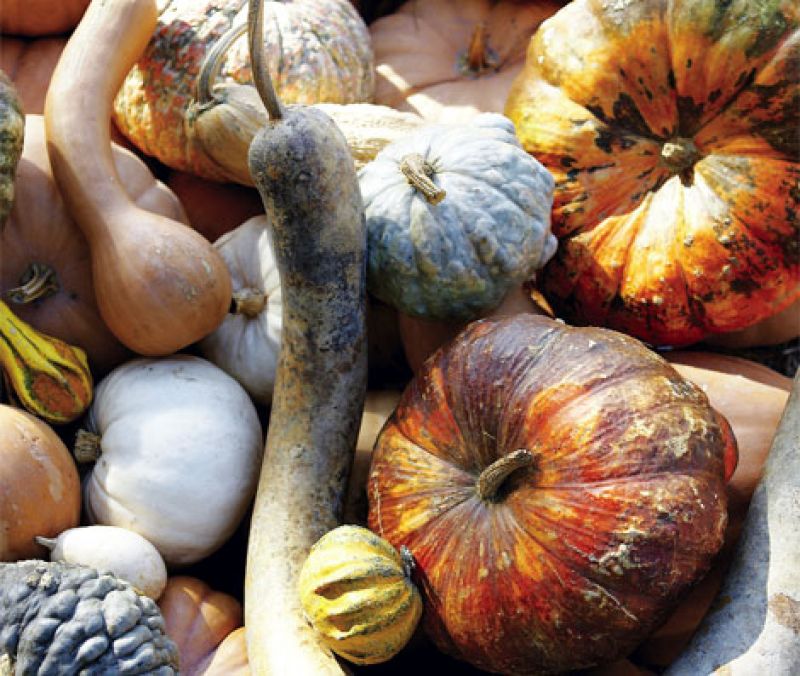
A small miracle if you ask Sidi: “They need a lot of attention, a lot of TLC.” Still, the fruit is an indigenous South Carolina crop, enjoying a rich heritage in other, less humid parts of the state. A small town northwest of Greenville owes its name to pumpkins after native Cherokee Indians introduced settlers to the naturally occurring, squash-like fruit—hence the settlement’s name, Pumpkintown, South Carolina.
Eat: Low in fat and cholesterol, these gourds are packed with vitamins, minerals, and beta-carotene. Just one cup of cooked pumpkin will serve up as much as 245 percent of your daily dose of vitamin A, an element critical to preserving vision and skin health. What’s more, scientists have uncovered a molecule in pumpkin that facilitates the regeneration of insulin-producing cells destroyed by diabetes.
Grow: Ready to sow your own seeds? Cultivating pumpkins here is difficult, certainly, but they can be a viable crop even in small home gardens. First, we recommend choosing seeds based on what you plan to do with the pumpkin—whether you’ll use for display or for cooking. All pumpkins require anywhere from 70 to 120 days to mature, so it’s best to lay seeds between July 1 and 15 for coastal regions and June 15 and 30 for central parts of the state, to ensure fruit will be ripe by autumn. Plant on raised beds about three feet apart (to promote drainage) and water liberally to encourage deep rooting. Avoid getting leaves or fruit wet. And because humidity is often the pumpkin grower’s biggest hurdle, use organic mulch of pine or wheat straw to protect the fruit from wet ground. Old shingles also work well, as plastic or paper materials only trap moisture.
Carve & Cook: Whether you’re selecting pumpkins from a local market or harvesting your own, choose only mature fruit with a deep orange color and no soft spots. In the kitchen, opt for sugar pumpkins because they are meaty and come with fewer stringy fibers than other varieties. Good picks for carving are Autumn Gold and Jack-o’-Lantern for their large sizes and intense orange color. Pumpkin just might be the darling ingredient of fall dishes, the poster fruit for the season’s sweet, healthy offerings. Here, find four delicious new ways to incorporate the tasty gourd into your menus.